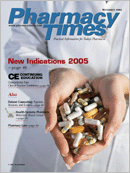Publication
Article
Pharmacy Times
EMRs May Save Billions
A RAND Corporation study has found thatelectronic medical records (EMRs) may save theUnited States >$81 billion annually through betterprocedures and reduced errors. The 2-yearstudy assumed an average investment of $7.7 billionper year over a 15-year period, resulting in90% of physicians and hospitals "successfullyadopting" EMRs and using them efficiently toreach the forecasted savings.
To date, 20% to 25% of hospitals and 15% to20% of physicians' offices have embraced computerizedrecords, but they are "generally limited" in the ability to share information. Theresearchers recommended that the federal governmentspeed up efforts to establish universaltechnology standards to promote adoption and toconsider financial incentives for institutionsimplementing the technology, as published inHealth Affairs (September/October 2005).
Supporters of EMRs and electronic prescriptionsfeel that such systems promise savings, but someof them caution that the technology will be hard toimplement and is unlikely to yield big benefits inthe near future. In a commentary on the RANDstudy,Harvard Medical School health policy expertssaid that steady but slow progress has been madein medical computing over the past 30 years.







